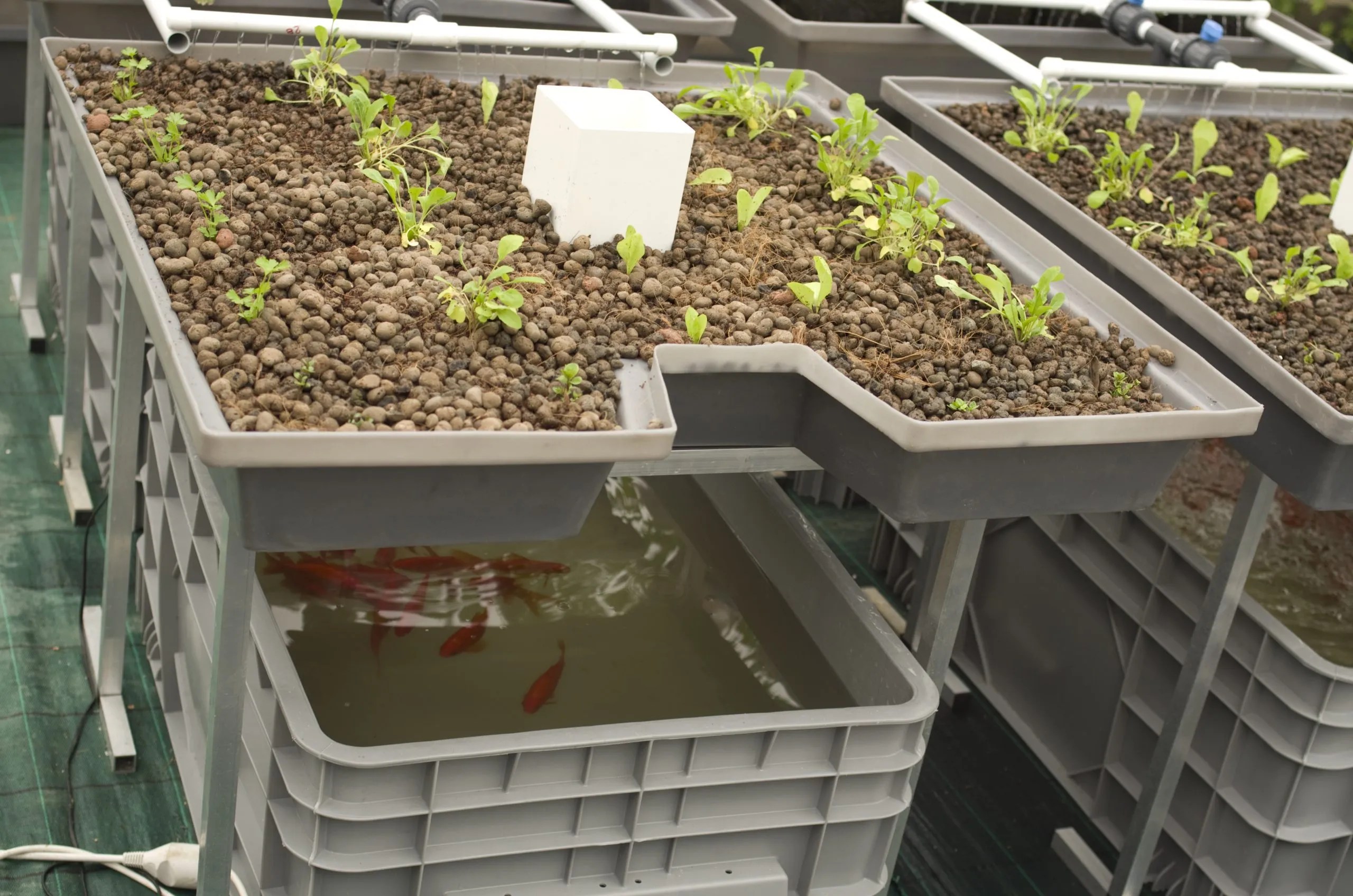

/GettyImages-142873284-7afec7706c2a4997841bde2792c7ff6b.jpg) www.treehugger.com ```html
www.treehugger.com ```html Introduction: Your DIY Aquaponics Journey Begins! Aquaponics, the marriage of aquaculture (raising fish) and hydroponics (growing plants without soil), offers a sustainable and rewarding way to produce your own food. This guide provides a step-by-step approach to building a small-scale aquaponics system perfect for beginners. Get ready to create your own miniature ecosystem!
Step 1: Planning and Gathering Materials Before you start building, careful planning is essential. Consider the space you have available, the types of plants and fish you want to raise, and your budget. Here's a basic materials list: Fish Tank: A plastic tub or aquarium (minimum 20 gallons for beginners). Grow Bed: A container to hold your plants (a plastic tote or a repurposed container works well). Water Pump: Submersible pump with appropriate flow rate for your system size. Grow Media: Clay pebbles, gravel, or lava rock. Plumbing: Tubing and fittings to connect the fish tank, pump, and grow bed. Air Pump & Air Stone: To oxygenate the water for the fish. Seeds or Seedlings: Choose plants that thrive in aquaponic systems (e.g., lettuce, herbs, strawberries). Fish: Goldfish are a hardy and affordable option for beginners. Siphon (Optional): Bell siphon or auto-siphon for flood-and-drain systems. Tools: Drill, saw (if necessary), measuring tape, and knife.
Step 2: Assembling the System – The Basics The most common beginner-friendly aquaponics system is a flood-and-drain setup. Here's how to assemble it: Positioning: Place your fish tank and grow bed near each other. The grow bed usually sits above the fish tank, allowing gravity to assist with water return. Connecting the Pump: Place the submersible pump inside the fish tank. Attach tubing from the pump to the grow bed. This will pump water from the tank to the grow bed. Setting up the Drain: Create a drain in the grow bed that allows water to flow back into the fish tank. This can be a simple hole with a screened pipe, or a more sophisticated siphon system (explained below). Filling the Grow Bed: Fill the grow bed with your chosen grow media (clay pebbles, gravel, etc.). Rinse the media thoroughly to remove any dust or debris. Adding the Water and Air Pump: Fill the fish tank with dechlorinated water. Place the air stone in the fish tank and connect it to the air pump. Turn on both the water pump and the air pump.
Step 3: Siphon Options (Optional but Recommended) A siphon automates the flooding and draining of the grow bed, providing plants with nutrients and oxygen. Two common options are: Bell Siphon: This requires a bell-shaped cover over the drain pipe and a slightly more complex setup. Numerous tutorials are available online demonstrating how to build a bell siphon. Auto-Siphon: These are pre-made siphons that are easier to install but may be less reliable than a well-constructed bell siphon. Choose the siphon that best suits your skill level and budget. Ensure the siphon cycles properly, flooding the grow bed and then draining it back into the fish tank.
Step 4: Planting and Introducing Fish Planting: Once your system is running and the water has cycled for a few days, you can introduce your plants. Start with seedlings or seeds that are well-suited for aquaponics, such as lettuce, herbs, or strawberries. Introducing Fish: After the plants have been in the system for a week or two, and the water parameters are stable, you can add your fish. Start with a small number of fish to avoid overloading the system. Goldfish are a good choice for beginners because they are hardy and tolerant of a range of conditions.
Step 5: Monitoring and Maintenance Regular monitoring and maintenance are crucial for a healthy aquaponics system. Water Quality: Test the water regularly for pH, ammonia, nitrites, and nitrates. Adjust as needed to maintain optimal levels for both plants and fish. Water Changes: Perform partial water changes (10-20%) every few weeks to remove excess nutrients and maintain water quality. Feeding: Feed your fish regularly with a high-quality fish food. Plant Care: Prune your plants as needed and provide support if necessary. Observation: Regularly observe your plants and fish for any signs of disease or stress.
Conclusion: Reap the Rewards of Aquaponics! Building your own DIY aquaponics system is a rewarding experience that combines gardening and aquaculture. With careful planning, construction, and maintenance, you can create a sustainable source of fresh produce and healthy fish. Remember to start small, learn as you go, and enjoy the process of building your own miniature ecosystem! Happy growing!
``` Component Of Aquaponics Systems
 www.aquaponicsforbeginners.com
www.aquaponicsforbeginners.com Aquaponics-what Is Aquaponics And How Does It Work?
 agromoris.com
agromoris.com 20 Best Plants For Aquaponics
/GettyImages-142873284-7afec7706c2a4997841bde2792c7ff6b.jpg) www.treehugger.com
www.treehugger.com
